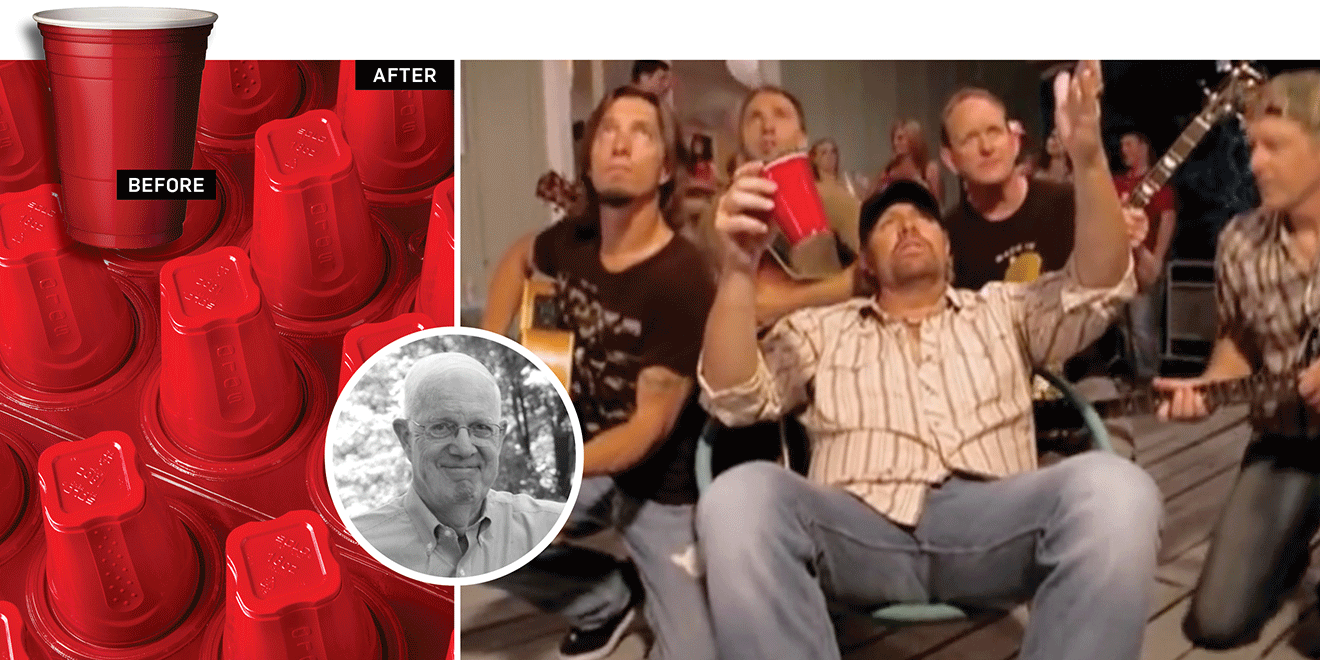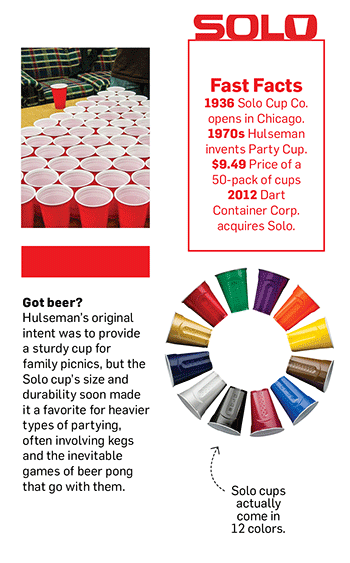Robert Klara reports in Ad Week:
The Solo cup comes in 9- and 18-ounce sizes, but the big one is what most like. It can hold a pint of beer. “It’s reached iconic status because it is the category. It’s durable, reusable and recyclable. It works without any sophisticated marketing. You don’t need sexy packaging—it just is what it is. It’s classic.” Party Cup is actually Solo’s official name. Toby Keith homage (is) the tune that, five-and-a-half years after its release, has over 48 million YouTube views.
A few days after Christmas last year, Toby Keith took to Twitter to pay a bit of tribute. It was all of 41 characters, but the sentiment was genuine: “Raise one for this good man today,” Keith wrote. “RIP #RedSoloCup.”
The platinum-selling country music star was marking the death of Robert Hulseman, a man he never met, but one whose invention had given Keith one of his most popular songs, and the title of same: “Red Solo Cup.”
The twangy ode from 2011—which Keith called “the stupidest song that I have ever heard in my life,” yet also admitted to loving—is a salute that struck millions as both hilarious and, no doubt, long overdue. After all, the Solo cup (there are 12 colors, but red is the most popular) is among the few American products that requires no introduction—unless, of course, you’ve never attended a picnic, barbecue, concert, kegger, tailgate party, major sporting event or played beer pong. For everyone else, the Solo cup is the party cup, end of story.Toby Keith’s 2011 song was a gift from marketing heaven, though the lyrics were a bit blunt: “Now a red Solo cup is the best receptacle/for barbecues tailgates fairs and festivals/and you sir do not have a pair of testicles/if you prefer drinking from glass,” sang Keith, who also marked the passing of the cup’s inventor, Robert Hulseman (inset). Though the ringed cup was iconic, Solo changed the design in 2009 (left), a response to demand for a cup easier to grip.L. to r.: Courtesy of Dart Container Corp.; Keith: YouTube
The Rim: The Solo cup comes in 9- and 18-ounce sizes, but the big one is what most everyone likes. It can hold a pint of beer, with enough room for foam. The Color: Robert Hulseman enlisted the help of his children to choose the cup colors. He liked blue best, but red outsells them all.
“It’s reached iconic status because it is the category,” observed Tosh Hall, global executive creative director of New York design shop Jones Knowles Ritchie. “It’s durable, reusable and recyclable. It works without any sophisticated marketing. You don’t need sexy packaging—it just is what it is. It’s classic.”The Dent: Added in 2009, these “ergonomic grips” ensure a more “reliable hold.” They're also home to the brand name.
Party Cup is actually Solo’s official name for its indestructible polystyrene vessel, and it never set out to create a classic—just a really sturdy cup. When Leo Hulseman started Solo in 1936, the company originally just made paper cups (the pointy-bottomed kind for watercoolers). It was Hulseman’s son Robert who invented the now-famous big plastic cup in the 1970s. The younger Hulseman’s aim was to create a large, sturdy cup for picnics and outdoor events. To that end, he added a series of graduated rings along the outside—rings that, fans soon noticed, corresponded handily to drink measurements (1 ounce for a shot of spirits, 5 ounces for a pour of wine, and so on). For its part, Solo insisted the rings were never meant as an alcohol pouring guide.Sidebar: Getty Images/iStock Photo
But it’s irrelevant in any case: In 2009, Solo got rid of the rings in favor of a “new innovative shape”—four vertical indented grips that give the cup a clover-shaped base. Purists may balk, but brand manager Becca Bikoff says the new cup is more stable and easier to hold, and consumers wanted it.
And what about that Toby Keith homage—the tune that, five-and-a-half years after its release, has over 48 million YouTube views? What does headquarters think of it? “At the end of the day, it’s a fun and catchy song,” Bikoff said. “One of the things the song does is harken back to what people use the cup for—for family and friends, and creating memories.”






















0 comments:
Post a Comment